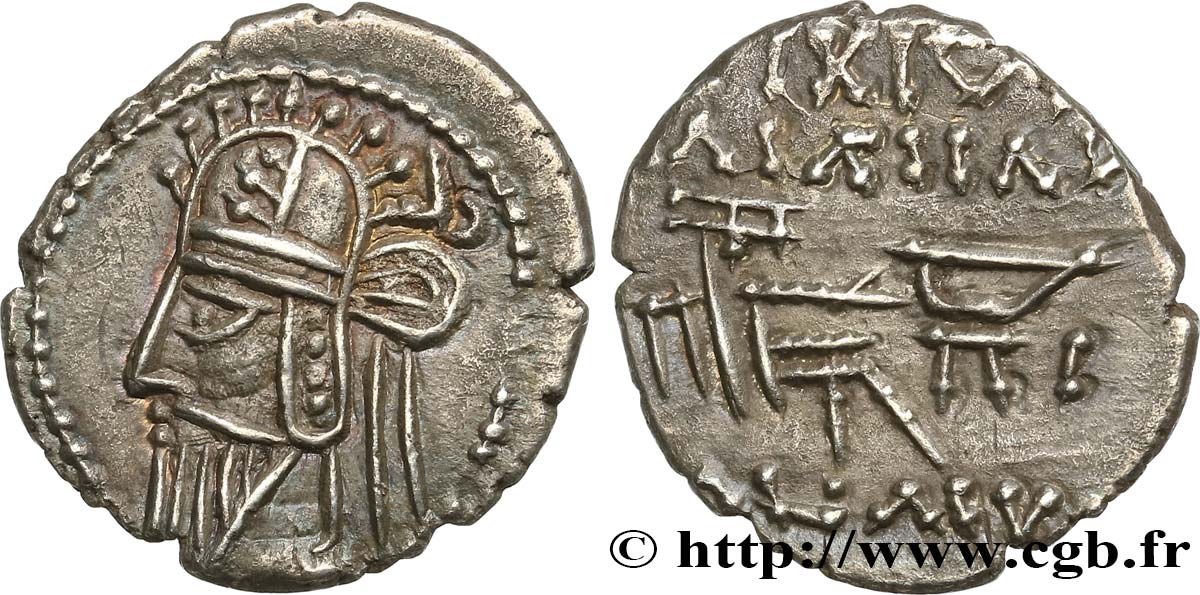正面
正面的文字 ANÉPIGRAPHE.
正面的说明书 Buste d’Artaban IV à gauche, tête coiffée de la tiare avec oreillette, un bandeau simple, avec nœud qui tombe derrière la tête, la barbe triangulaire longue bifide et pointue ; la tiare est gemmée ou perlée et richement décorée ; derrière la tiare, abréviation d’Artaban.
背面
背面的文字 LÉGENDE CORROMPUE, GRECQUE ET PEHLVI.
背面的说明书 Archer assis à gauche sur un trône, tenant un arc de la main droite ; au-dessous, un monogramme.
评论
历史细节
PARTHIAN KINGDOM - ARTABANUS IV
(216-224)
On the death of Vologèse V (207), his son Vologèse VI became king. But against him rose his younger brother, Artaban IV. The latter seized Media and Persis with the support of the great Iranian families and dominated his brother. The whole internal history of the dynasty is thus shaken by the claims of the various representatives of the Arsacid family to the crown of "shah in shah" (king of kings), and by the rebellions of the powerful landed aristocracy which had armies private. When Artaban took power (216), the emperor Caracalla asked him for the hand of his daughter. During the wedding, the Romans are said to have killed unarmed Parthians, Artaban managing to flee. But the most plausible version is that the Parthians refused to marry off their daughter to the emperor, who resumed the war and advanced to Assur. Artaban began a counter-attack when Caracalla was assassinated (April 8, 217), with the complicity of Macrinus, his successor. After talks failed, a three-day battle took place around Nisibis (218). Artaban won a decisive victory and Macrinus had to pay a tribute of fifty million denarii... which did not prevent him from minting coins with the legend "victoria parthica". Despite three centuries of ruinous relentlessness to annihilate the Parthian state, Roman imperialism, instrumented by "the best army in the world", was never able to settle beyond the natural border of the Euphrates.. Ironically, the fall of the Arsacids came from a small vassal, an ambitious wren from Fars (like the Achaemenids from whom he claims to be a descendant), a certain Ardashir grandson of Sassan. From 212, he suppresses his brothers and the little princes of his province, extends his suzerainty far beyond Perside, on Isfahan and Kerman. Artaban IV raises an army to fight him. But in 224, in the plain of Hormizdaghân in Susiane, he was killed by the hand of Ardashir. Tradition reports that the Sassanid crushed the head of the last Arsacid king with his foot.. The new dynasty overcame the ultimate resistance when Ardashir (who would have married a daughter or cousin of Artaban IV), was crowned "King of kings" at Ctesiphon (226).








 对产品描述纠错
对产品描述纠错 打印
打印 分享我的选择
分享我的选择 提问
提问 Consign / sell
Consign / sell




